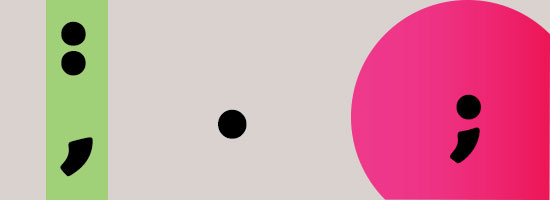When writing, we all want to stick to the adage: ‘dot your I’s and cross your T’s”. However, have you ever read a sentence and suffered shock or wondered what the writer was trying to say? Then, it dawns on you…..the punctuation is the problem! If only the writer had inserted, deleted or repositioned a punctuation mark, then everything would be A-Okay. Punctuation is actually more important than we think. Let’s recap the purpose of a few punctuation marks:
Full Stop (.)
A full stop is used at the end of a sentence or abbreviation. It indicates there is nothing more to add.
Comma (,)
A comma is mainly used to separate parts of a sentence such as clauses, and items in a list. It is also used to separate an adverb from the rest of the sentence, to enclose parenthetical words and phrases, to introduce quotations, among other things.
Colon (:)
A colon is used to precede a list of items, a quotation, an explanation or sentence expansion.
Semi-colons (;)
Semi-colons also serve as sentence separators. They are preferred to commas when separating items on a list, when the items are more grammatically complex (for example, a list that already contains many commas). Semi-colons are also preferred to full stops when linking two closely related ideas.
Here are a few light-hearted examples of how punctuation can alter the meaning of a statement. We hope these help you to avoid easily made errors or even to save some lives.
Let’s eat grandma! …
Let’s eat, Grandma!
A woman without her man, is nothing…
A woman: without her, man is nothing!
Buy a bed and get one night stand for free…
Buy a bed and get one-night stand for free
I’m sorry I love you…
I’m sorry; I love you
We are going to learn to cut and paste kids…
We are going to learn to cut and paste, kids
Help a thief! … Help! A thief!
To continue reading, purchase Vol.8 #8, 2016 Issue.

